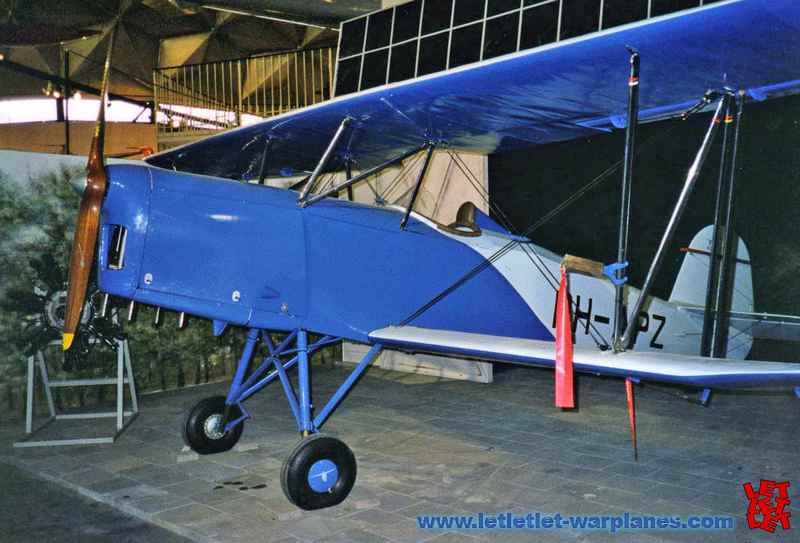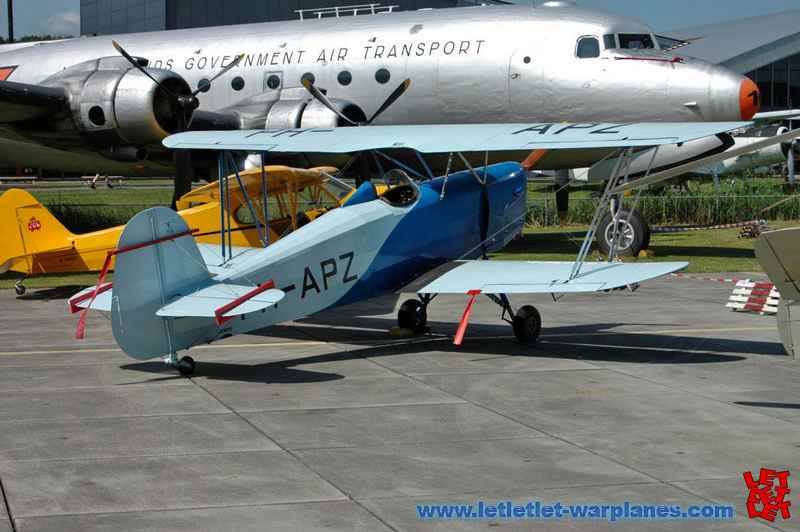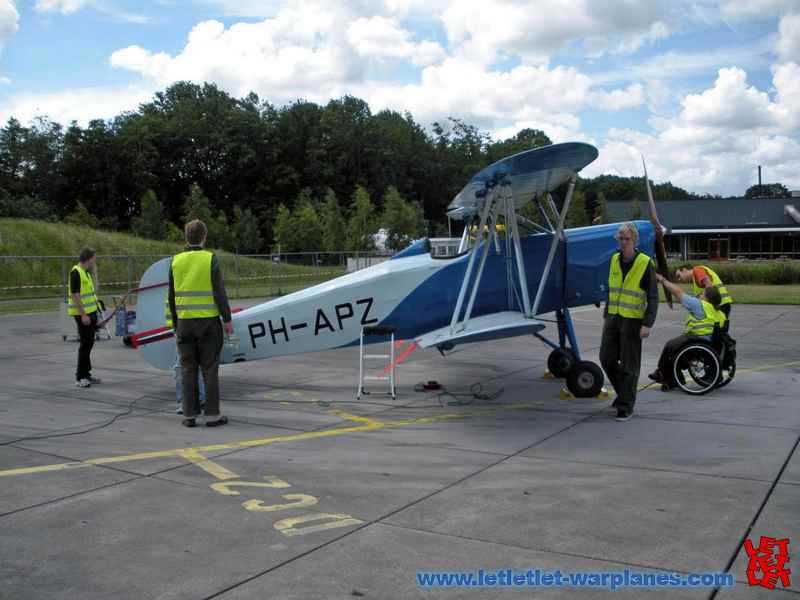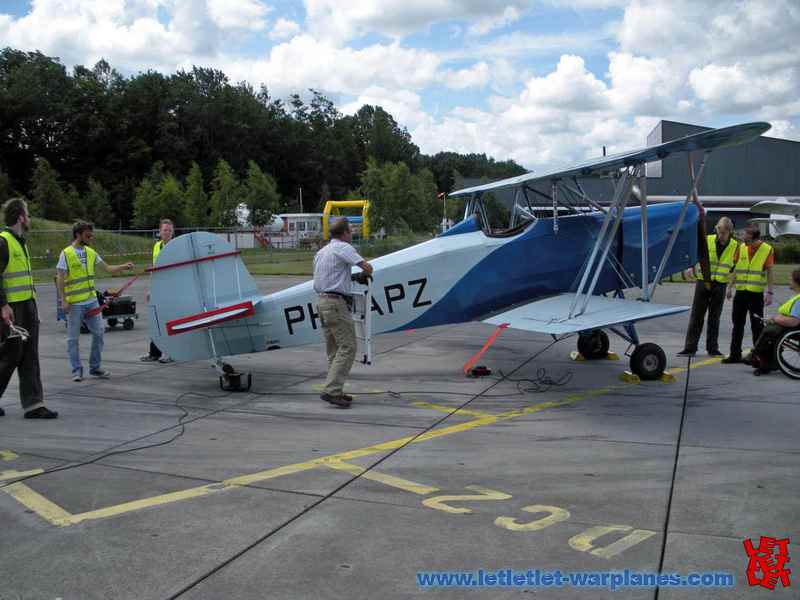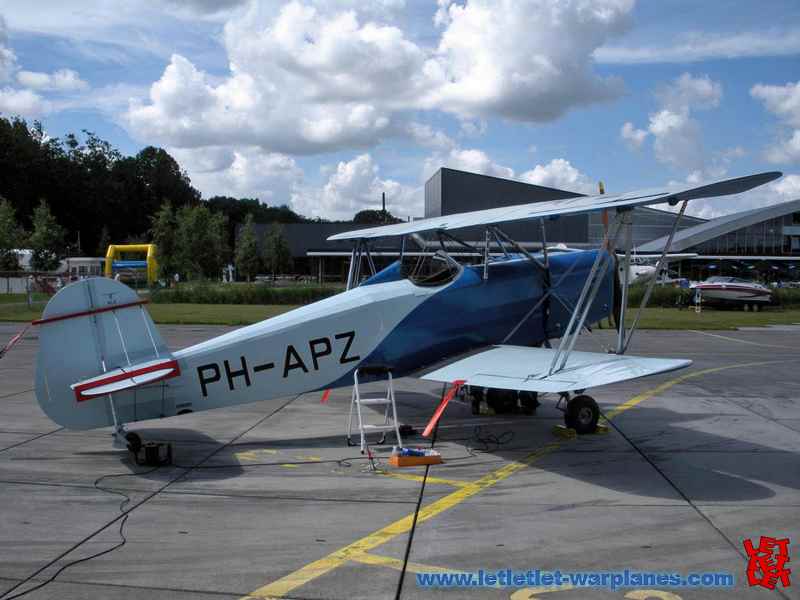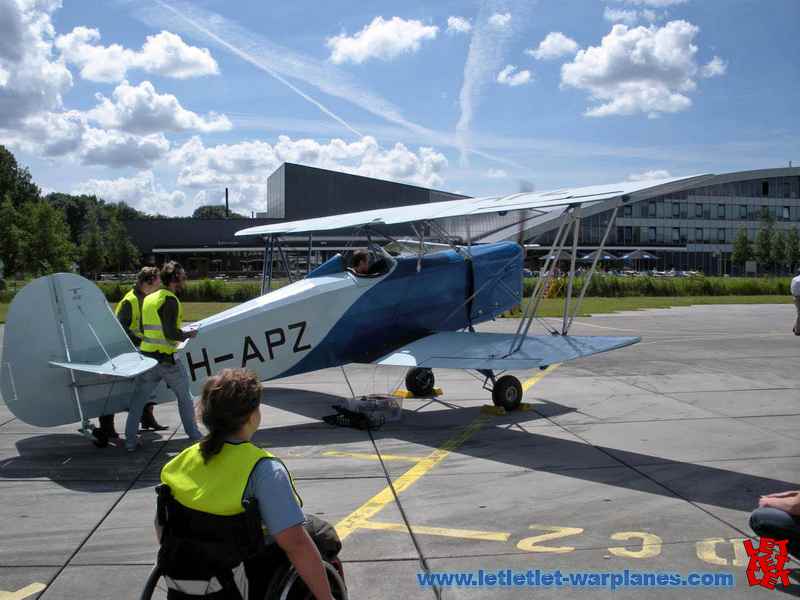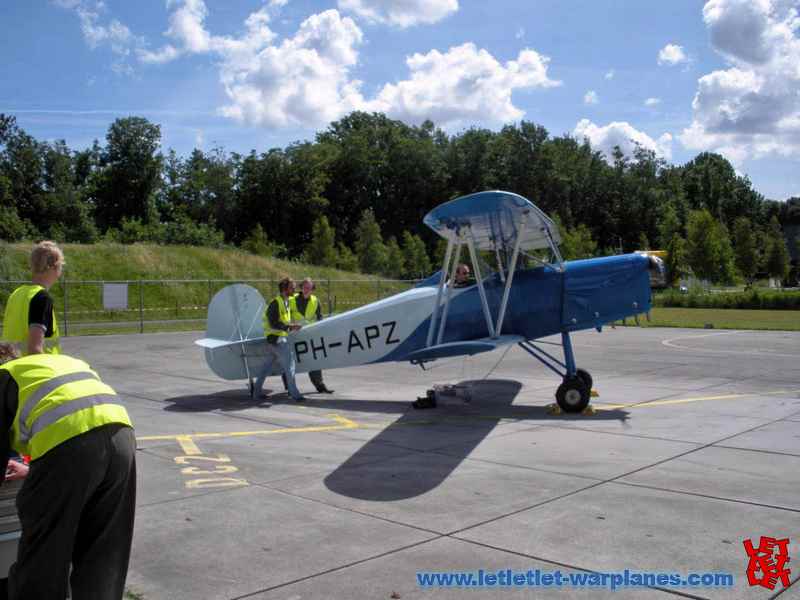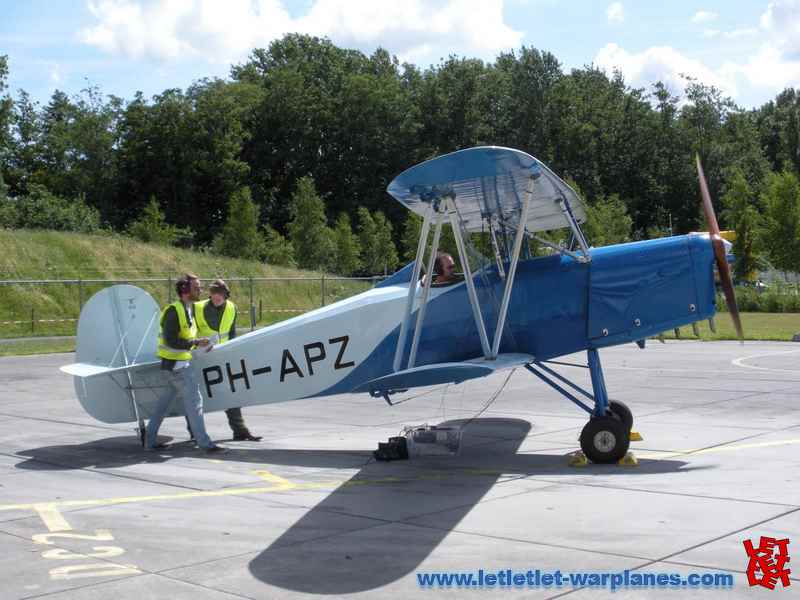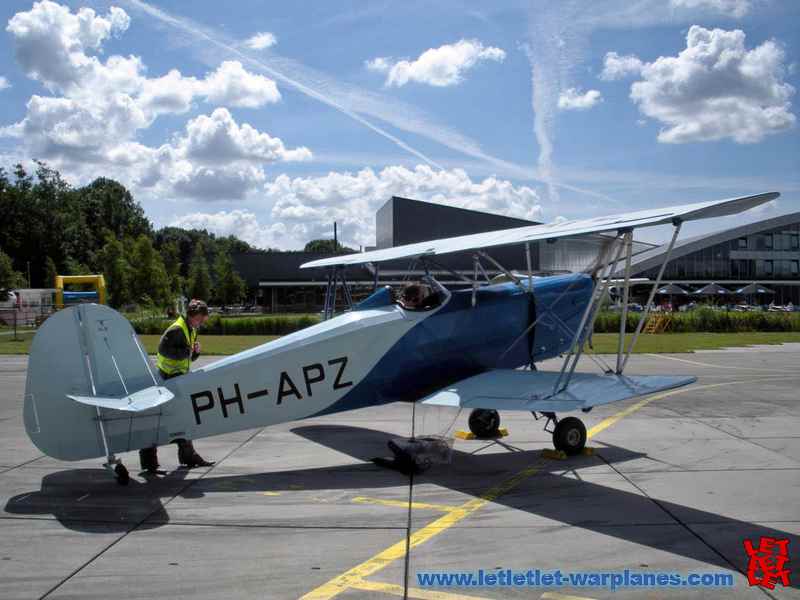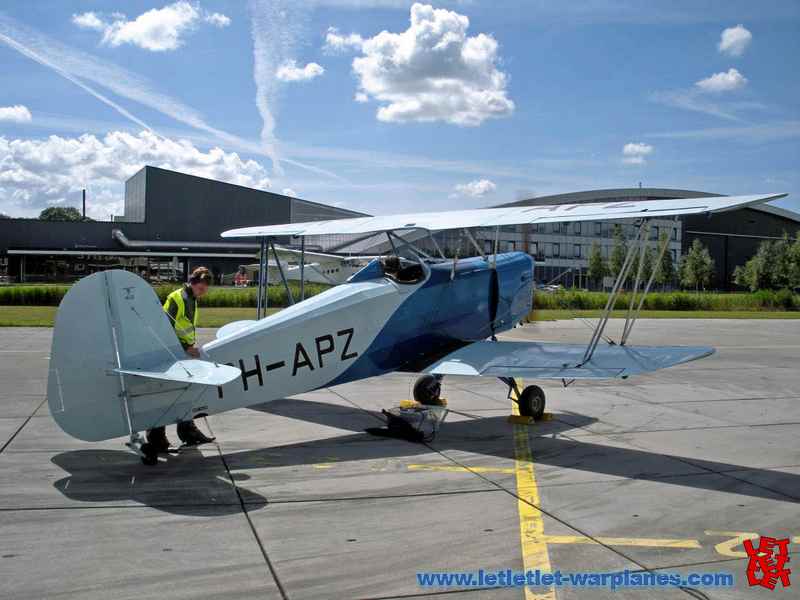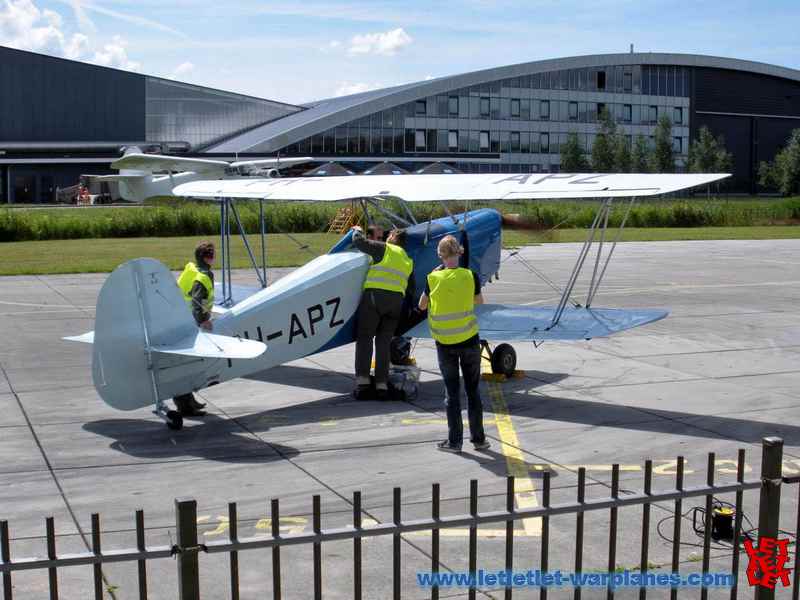Lambach HL-2
Ir. Hugo Lambach was an aeronautical engineer and former member of the Delft Student Aeroclub. The DSA was an aeroclub of students of the Technical University in Delft. Lambach designed for the DSA a small low-wing two-seat sports plane, with designation HL-1. It flew in 1936, powered by a small 90 hp Pobjoy air-cooled radial engine and was intensively used at Ypenburg airfield by DSA until the outbreak of the war in May 1940. The Germans let the plane rot away and only parts remained at the Technical University as study objects.
The HL-2:
As next project, Lambach designed a small single-seat biplane intended for aerobatics. It was the intention that at aerobatic contests held in the Netherlands it could beat the German competition. For construction of this new plane, designated as HL-2, Lambach founded the Lambach Aviation works. It was housed in the ‘Starlift’ elevator factory at Voorburg near The Hague. The HL-2 was flown for the first time from Ypenburg airfield on 4 May 1937 by Hein Schmidt-Krans, carrying the civil registration PH-APZ. The plane showed to have excellent flying characteristics, but because there was little time to practice for the next aerobatic contest held at Eelde airfield it scored a 3rd place only with German pilots on 1st and 2nd place. Pilot on the HL-2 during this event was again Schmidt-Crans.
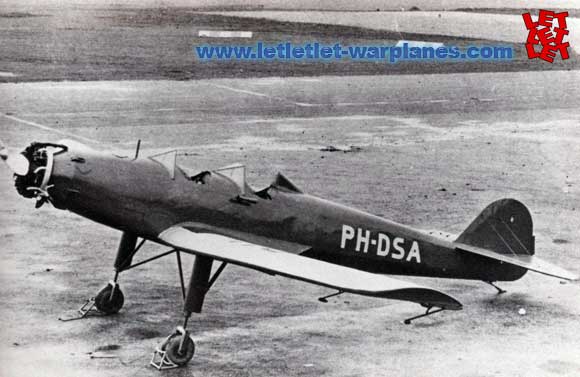
After this contest it was handed over to the national aviation school NLS for training of future aerobatic pilots. However, during the 1938 aerobatic contest the Germans won again very convincingly! Pilot of the HL-2 on this occasion was Dick Asjes who finished at the 7th and last place. Because of the worsening international situation no contest was held in 1939. During the five-days war in May 1940 the HL-2 was destroyed at Ypenburg by German bombs. Although Hugo Lambach designed as the HL-3 an attractive high-wing twin-engine passenger plane the Lambach factory was soon closed and Hugo Lambach joined the Fokker aircraft works. He died in July 1972.
The HL-2 replica:
To celebrate the 45-years jubilee of the Student Aeronautical Study Association ‘Leonardi da Vinci’ of the Technical University of Delft, the members decided it would be a nice project to build an ‘exact’ replica of the Lambach HL-2. However, it never was the intention to make a 100% exact replica since this was almost impossible for practical and for flight-safety reasons.
To realize the construction the SSVOBB, or Stichting Studenten Vliegtuigontwikkeling, -Bouw en Beheer (Foundation Aircraft development, construction and Maintenance) was founded in 1990.

Driving person behind this project was mr. Hans Blaauw. The project was started around 1989 with the formation of a construction team of dedicated volunteers. The team found out that the chief constructor of the Lambach HL-2, Ir. Wim de Koo was still alive and fully prepared to assist with the project. As a great help a set of original works drawings was discovered at the Aviodome museum at Schiphol airport. In fact, the finding of these drawings was the main reasons this quite unknown aircraft was chosen as a project!
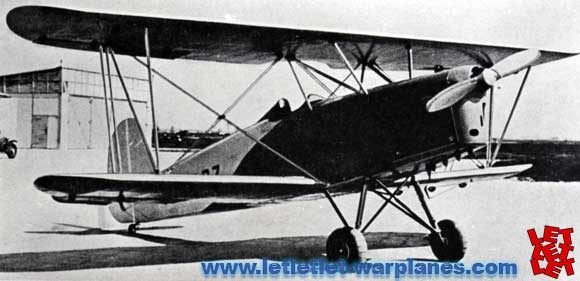
Over more than five years so much work was done to complete the construction that it was more than enough to fill a book. In fact a book on this project WAS written by Bas Nijenhuis, Ferdinant Spek and Piet Moeleker and published in 1996 (See references!). The original HL-2 had a typical construction of that period with a welded steel tube fuselage covered with fabric, light-alloy engine cover plates and a wooden wing with fabric covered control surfaces. The team had to ‘rediscover’ many construction techniques as originally used in the Thirties and of course modern materials were used where appropriate! As a novelty, the new GLARE-composite material was used, amongst others for the engine firewall. This was the first time this new material was used in an aircraft! After five years of hard working the HL-2 replica was finally ready to make its first flight. This took place on Monday 18 September 1995 at Gilze-Rijen airbase. Pilot on this occasion was mr. Charels Bertels. Over the next few months more test flights were made until the testing programme was completed on 28 December 1995 with the 25th flight. The replica carried the original registration of the original, PH-APZ.
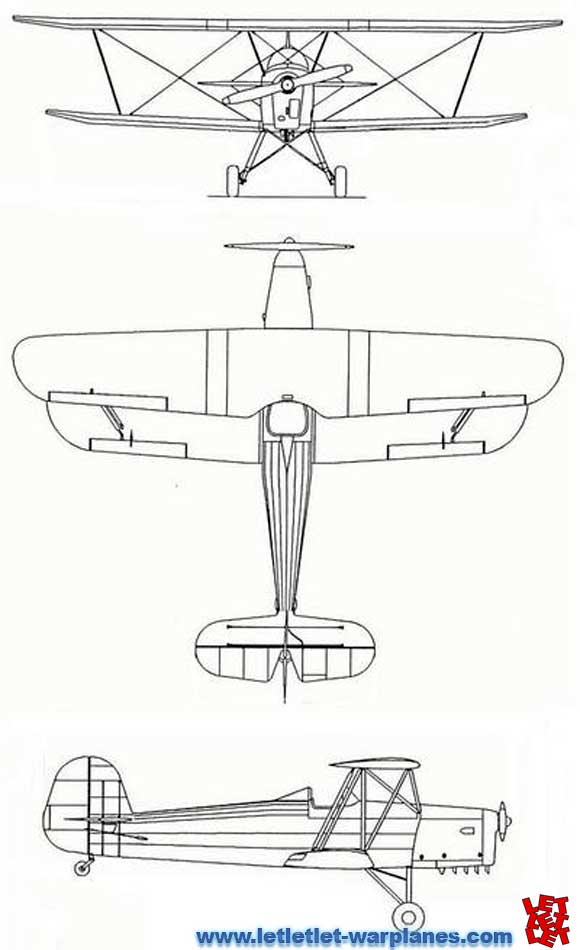
It was the intention to use the plane for airshow displays but unfortunately its Certificate of Airworthiness was withdrawn when fatigue cracks were found in the wing strut supports. The plane was located at various places over the years. Over 1995-1999 is was located at Gilze Rijen Airbase. Over 1999-2000 it was placed in the display hall of the old Aviodrome museum at Schiphol airport. From 2000 to 2005 it was stored at Midden-Zeeland airfield and over the period 2005-2008 it was located at Hoogeveen airfield. In September 2008 it was removed to its present location at Lelystad Airport in the exhibit hall of the Aviodrome Theme Park Museum. SSVOBB is still active with the Lambach HL-2 replica and they hope to solve the technical/structural problems to make the plane airworthy again. Last activities took place on 6 July 2010 when a group of SSVOBB volunteers, headed by mr. Halbe Mulder, started the engine again to do some vibration measurements. Basically the engine was regularly started over the years, but since its last move to the Aviodrome there were some problems with one of the magnetos and the original planning of SSVOBB to do the vibration test was quite hampered by these problems.
|
Lambach HL-2 Specifications: |
|
|
Registration: |
PH-APZ |
|
Year and place of fabrication: |
1989-1995, Delft |
|
Type: |
Lambach HL II |
|
Serial Number: |
20002 |
|
Sizes |
|
|
Wing Span: |
8.00 meter |
|
Length: |
6.70 meter |
|
Height: |
2.40 meter |
|
Empty Weight: |
4590 N (468 kg) |
|
Max. Take-off Weight: |
6080 N (620 kg) |
|
Operating Data |
|
|
Stall Speed: |
43 KIAS |
|
Cruise Speed (VA): |
110 KIAS |
|
Max. Speed (VNE): |
145 KIAS |
|
Max. G-load: |
-2.9 / +5.8 |
|
Operating Ceiling: |
6000 ft MSL |
|
Min. take-off distance: |
200 meter |
|
Min landing distance: |
300 meter |
|
Powerplant |
|
|
Type: |
Gipsy Major Mk. 1 |
|
Amount: |
1 |
|
Builder: |
De Havilland Engine Co. Ltd. |
|
Serial number: |
95121 A 444646 |
|
Fuel: |
AVGAS 100 LL |
|
Oil: |
Aeroshell W100 |
|
Propellor |
|
|
Amount: |
1 |
|
Builder: |
Poncelet |
|
Type: |
Two-bladed, wooden propeller with fixed pitch |
-Wesselink, Theo and Postma, Thijs, De Nederlandse Vliegtuigen, 1982 Uniboek B.V., Bussum
-Nijenhuis, Bas; Spek Ferdinant and Moeleker Piet, De Lambach HL-II, 1996 Barjesteh, Meeuwes & Co./Syntax Publishers, Rotterdam
See this for actual information and on project status also the Twitter account
Nico Braas
With special thanks to mr. Halbe Mulder – Lambach coordinator SSVOBB.

